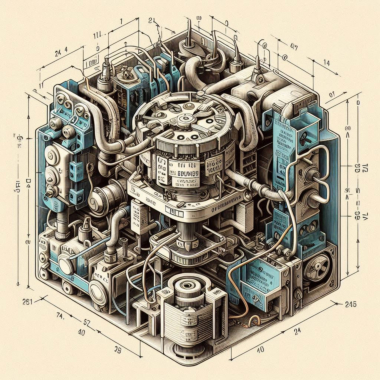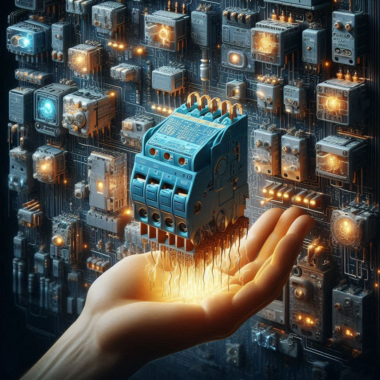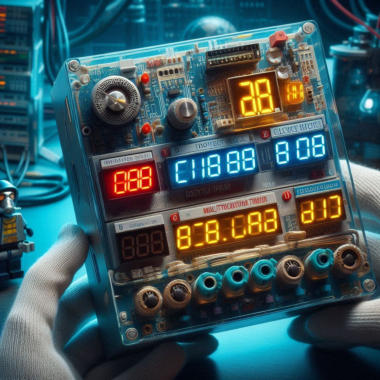How automated lighting systems work: what you need to know
Street and commercial lighting is one of the biggest energy consumers in cities and businesses. According to industry estimates, lighting can consume up to 20-40% of a facility's energy budget, but modern automation can reduce these costs by tens of percent. How can street lighting costs be reduced? Infrastructure can be made more transparent and reliable through smart solutions. The practical result for communities and businesses is fewer “empty” kWh and up to 20-30% energy savings thanks to automation and increased transparency in the work of public utilities.
Automation answers the question “what is a street lighting management system” and why communities need it. It is a hardware and software complex of controllers, sensors, and platforms that provides remote control of street lights, flexible switching scenarios, and consumption accounting.
What is “smart lighting”?
Smart technology is when lights are controlled automatically, according to a schedule or astronomical time, and adapt to conditions. The automated system works as follows: controllers collect telemetry, make decisions locally or in the cloud, and generate reports for utility services.
Remote control and monitoring of lights
Operators can see the status of each line, consumption, accidents, and outages in real time—the advantages of street lighting dispatching. The street lighting energy consumption monitoring system helps track kWh by zone and find “hot spots.”
Astronomical timer settings
How astronomical time-based lighting control works: the system uses geolocation for precise switching on/off at sunrise/sunset. This provides stable results: energy savings through lighting automation are up to ~30% without compromising safety. It also works with a backup algorithm, even if the internet is down.
How to reduce street lighting costs: optimizing energy consumption
Saving is not a one-time event, but a process. Transparent accounting, clear rules for switching on/off, and prompt response to deviations ensure sustainable results. Examples of implementation:
- The municipal housing and utilities department, together with AVTODOR, implemented a lighting system for a front-line city: 136 cabinets are controlled remotely, turning the lights on/off throughout the city or selectively. Meters with automatic monthly reports have been added and air raid alerts have been integrated.
- At a critical infrastructure facility, where lighting areas are located at a considerable distance from each other, a control panel was created for light masking during alarms, with access from any device for authorized persons. There is group control and automatic modes according to schedules, taking into account sunrise/sunset. Staff visits are no longer necessary.
- A pharmacy chain (250+ locations) automated sign management: they eliminated overspending due to human error and configured modes with the option of manual intervention. Sign mode: turn on 30 minutes before sunset, pause during curfew, turn on again 1 hour before opening, and turn off at dawn.
Centralized remote control of lighting and signage has increased safety, efficiency, and cost transparency, eliminating the need for staff to travel.
Online electricity consumption monitoring
Operators receive online analysis of electricity consumption for each line: daily/weekly graphs, seasonal comparisons, and anomaly detection. This is how the electricity consumption monitoring system works, with automatic notifications and report export.
Energy-saving scenarios for streets and shop windows
Nighttime brightness reduction, shutdown in “dead” zones, weather adaptation — all this optimizes energy consumption for lighting storefronts and street lines. Event-action scenarios work, taking into account which sensors are used in lighting systems (light, motion, cabinet opening, voltage).
Analysis of accidents and outages
“Smart” dispatching provides monitoring of accidents and lighting outages, saving history linked to events, and quick search for causes. This helps reduce downtime and increases network reliability.
Commercial solutions for stores and pharmacies
Retail is also actively saving on lighting. The combination of LED luminaires and automation provides a quick return on investment, and marketing lighting scenarios boost sales. Modern LEDs for stores and pharmacies and control via the web or a mobile app provide energy-efficient lighting for stores without overspending. This is the optimal solution for storefronts, salesrooms, and pharmacies.
Automation of lighting for shop windows and sales areas
Lighting scenarios for shop windows and sales areas are launched from a mobile device, according to a schedule, or in response to events. LED lighting for shops and pharmacies plus automation is an energy-efficient solution with clear load control and convenient reports.
Remote control and integration into smart stores
Affordable lighting control for commercial premises via SCADA/IoT, as well as lighting integration into smart store systems with POS/ERP or security systems. Affordable flexible lighting control for pharmacies and smart lighting for pharmacies and retail spaces, taking into account operating modes.
Lighting to attract customers
The platform supports features such as retail space lighting and remote control of display lighting. Add “evening accent” scenarios, and display lighting to attract customers becomes a marketing tool.
What does lighting automation offer a community: benefits for cities and municipalities
Automation means not only savings, but also management transparency. It creates an evidence base for decisions and increases residents' trust in public services. Thanks to cloud platforms and automatic reporting, cities get clear KPIs, consumption control, and rapid response to accidents. Astronomical graphs and on/off scenarios make the scenario predictable, and the integration of street lighting into the “smart city” concept provides scalability and a unified platform for monitoring the entire infrastructure.
Transparency of utility services
Thanks to analytics and automatic reports, it is easy to show how to increase the transparency of utility services: where there are savings, where there are losses, and where modernization is needed. This is what the automation of lighting in a settlement provides—control, reporting, and rapid response.
Examples of system implementation in Ukrainian cities
Today, there are already examples of “smart lighting” systems in cities—from individual avenues to entire districts, as well as LPR cases from retail. Such projects are practical examples of “smart technologies” in Ukrainian cities, consistently showing double-digit savings.
Cloud platforms for monitoring and analytics
The control center is the Overvis cloud platform for lighting: object maps, alarms, consumption history, exports, and lighting control via a mobile app. Successful integration into the “smart city” concept and infrastructure as a whole provides a single dispatch window, cost transparency, rapid response to accidents, and scalable connection of new objects. What tasks does the system solve:
- Savings: scenarios, astronomical mode, load control.
- Reliability: backup algorithms, instant notifications.
- Transparency: automatic reporting for utilities, energy consumption audit.
Key components of the system
- Controllers with astronomical timer support.
- Sensors: light, motion, voltage.
- Platform and mobile application for dispatching.
The “smart city” concept and commercial scenarios in retail are a quick way to achieve savings and transparency. If you want to see in practice how to reduce street lighting costs and what advantages the cloud offers, check out examples of systems in cities or the Overvis demonstration.



